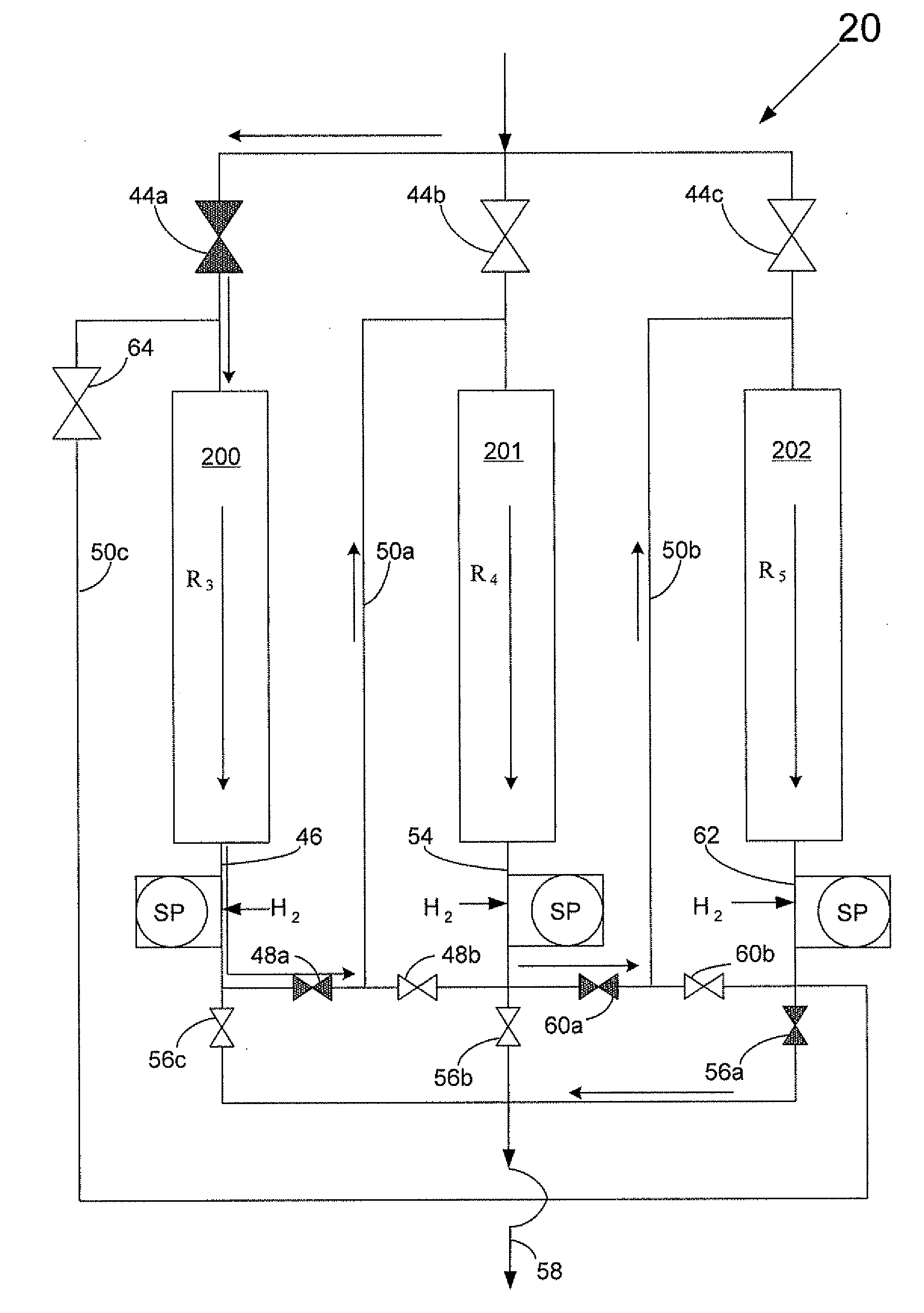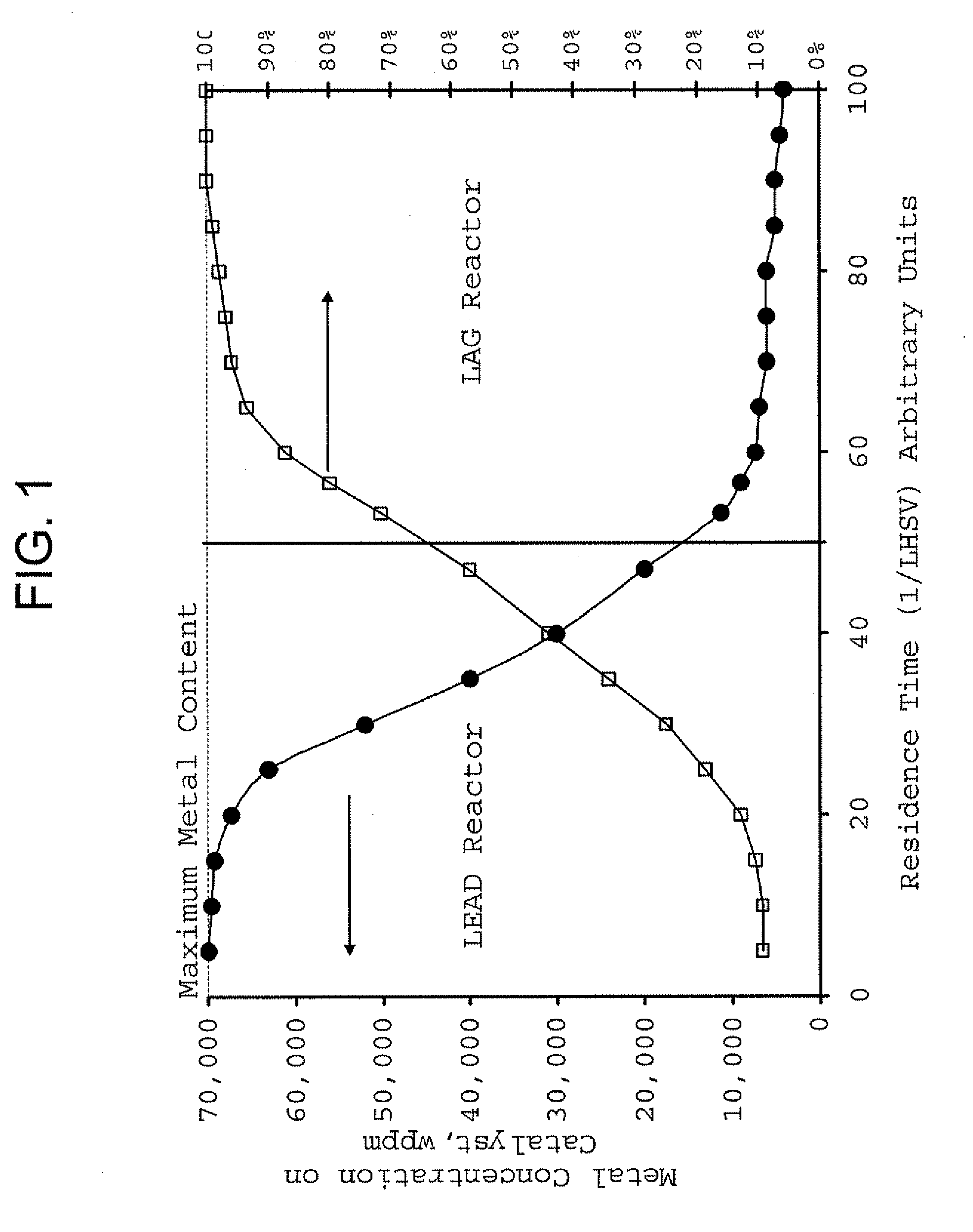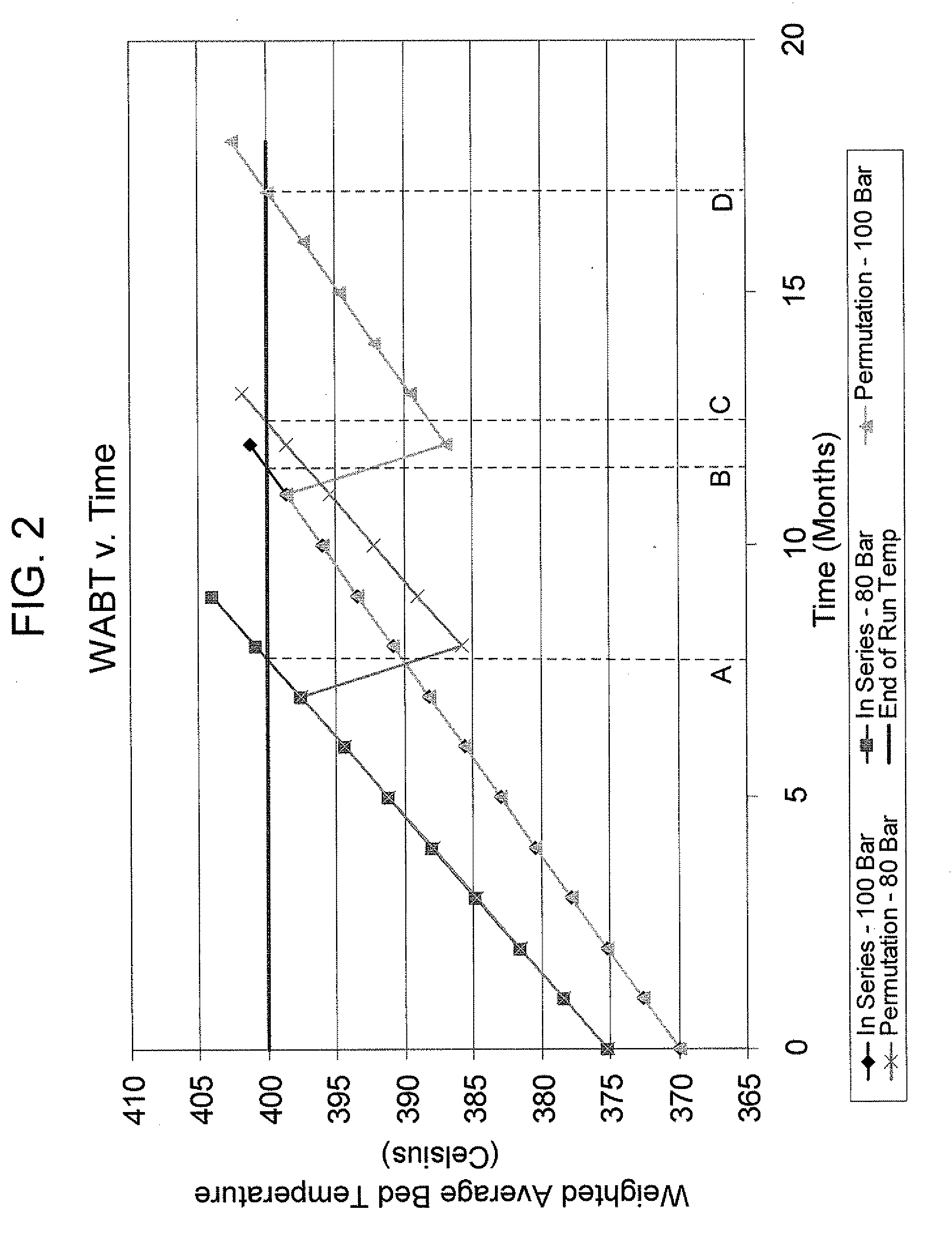Process for catalytic hydrotreating of sour crude oils
a technology of crude oil and desulfurization process, which is applied in the direction of physical/chemical process catalysts, chemical processes, separation processes, etc., can solve the problems of detrimental to the hydro-desulfurization activity of coke precursors, and high concentration of coke precursors, etc., to prolong the cycle length, improve the hds activity of the overall catalyst system, and increase catalyst utilization
- Summary
- Abstract
- Description
- Claims
- Application Information
AI Technical Summary
Benefits of technology
Problems solved by technology
Method used
Image
Examples
example 1
Permutations which Increase the Catalyst Cycle Length of the Process Unit
[0036]As has been detailed within the description of the invention the permutations allow an increased cycle length for the production of a Synthetic Crude Oil. These permutations afford increased catalyst utilization and therefore an increased profitability by allowing a higher on stream factor. Table I details some examples of these permutations.
TABLE IPermutation for the Start of Run ConfigurationFlow of FeedstockSequenceStart of Run ConfigurationR1R2R3R4Permutation For DeactivationR2R1R3R4of Catalyst in HDM SectionPermutation For DeactivationR2R1R4R3of Catalyst in HDM Sectionfollowed by HDS SectionPermutation for DeactivationR1R2R4R3of Catalyst in HDS Section
example 2
Production of Low Sulfur Crude Oils, Synthetic Crudes A and B
[0037]One embodiment of the present invention is the production of a synthetic crude oil from an Arab Heavy Crude Oil feedstock. Some typical properties of an Arab Heavy Feedstock processed can be seen in Table II below. The feedstock detailed in Table II was operated within the following boundary conditions as detailed within one embodiment of the present invention.
TABLE IIAn Example of a Typical Feedstockto be Desulfurized by the ProcessArabian HeavyCrude OriginExportDensity at 15° C.g / ml0.8904CCRwt %8.2Vanadiumwtppm56.4Nickelwtppm16.4Sulfurwt %2.83NaCl contentwtppmCwt %84.9Hwt %11.89Owt %0.43Nwt %0.22
[0038]A 1000 ml tubular reactor was packed with 10% by volume of Catalyst A, 20% by volume of Catalyst B and 70% by volume of Catalyst C. The catalysts were then activated using a conventional pre-sulfiding technique, with DMDS sulfiding agent. The Arab Heavy feedstock as described in Table II was then passed over the catal...
PUM
| Property | Measurement | Unit |
|---|---|---|
| Percent by mass | aaaaa | aaaaa |
| Percent by mass | aaaaa | aaaaa |
| Boiling point | aaaaa | aaaaa |
Abstract
Description
Claims
Application Information
 Login to View More
Login to View More - R&D
- Intellectual Property
- Life Sciences
- Materials
- Tech Scout
- Unparalleled Data Quality
- Higher Quality Content
- 60% Fewer Hallucinations
Browse by: Latest US Patents, China's latest patents, Technical Efficacy Thesaurus, Application Domain, Technology Topic, Popular Technical Reports.
© 2025 PatSnap. All rights reserved.Legal|Privacy policy|Modern Slavery Act Transparency Statement|Sitemap|About US| Contact US: help@patsnap.com



